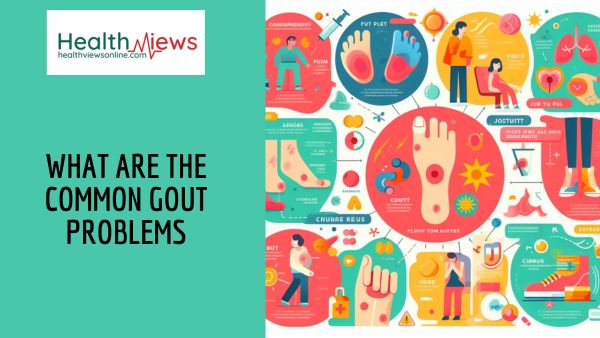Gout is a kind of arthritis that can cause a wide range of symptoms in those who suffer from it. It is a complex and painful condition characterized by uric acid crystal accumulation in joints and tissues, resulting in inflammation and extreme discomfort. Gout is most typically associated with the joints of the big toe, although it can also affect other joints throughout the body. This article will provide an overview of the common Gout problems, which can have a substantial impact on the quality of life for those who suffer from this condition.
Gout causes a wide range of issues, from chronic pain to dietary limitations, and has a substantial impact on the lives of those who suffer from it. Understanding their symptoms is critical for both those suffering from gout and the healthcare professionals who treat them.
Also, Read Narcolepsy: Symptoms, Causes, Prevention, and Treatment
Top 10 Common Gout Problems with Symptoms, Prevention and Care Tips
1. Acute Joint pain
Symptoms – Sudden, acute pain in the big toe, although it can also affect other joints.
Prevention – Maintain a healthy weight, stay hydrated, and limit alcohol and purine-rich foods.
Care tips – To minimize swelling, rest the injured joint, use ice, and elevate it. Over-the-counter pain medications can be beneficial.
2. Swelling and Inflammation
Symptoms – Redness, warmth, and swelling in the affected joint.
Prevention – Avoid triggers such as excessive alcohol, sugary beverages, and high-purine foods.
Care tips – Immobilise and elevate the joint, and consider using anti-inflammatory drugs as prescribed.
Also, watch health views web stories: What is Gout?
3. Limited mobility
Symptoms – Difficulty moving the joint due to pain and swelling.
Prevention – Maintain a healthy weight and exercise regularly to keep your joints mobile.
Care tips – Physical therapy and gentle range-of-motion exercises can help increase joint mobility.
4. Chronic joint pain
Symptoms – Recurring gout attacks leading to chronic pain.
Prevention – Follow medication and dietary instructions for prevention.
Care tips – Long-term medication management and lifestyle changes can help to reduce chronic pain.
5. Tophi Formation
Symptoms – Small, hard nodules (tophi) under the skin near joints.
Prevention – Uric acid levels can be controlled with drugs and dietary modifications.
Care tips – Tophi that are big or bothersome may require surgical removal.
6. Kidney Stones
Symptoms – Pain in the lower back or abdomen, blood in urine, and frequent urination.
Prevention – Stay hydrated and keep your uric acid levels under control.
Care tips – Medical intervention may be required depending on the shape and location of the stones.
7. Decreased Quality of Life
Symptoms – Sleep disturbances, depression, and anxiety due to pain and disability.
Prevention – Maintain a good attitude and seek help from healthcare specialists for prevention.
Care tips – Addressing mental health as well as physical health is critical for total well-being.
Also, Read Emphysema: Symptoms, Causes, Prevention, and Treatment
8. Dietary Restrictions
Symptoms – Avoid high-purine foods such as organ meats, shellfish, and sugary beverages.
Prevention – Prevent gout by eating a diet high in fruits, vegetables, and low-fat dairy.
Care tips – Work with a trained dietitian to create balanced meals that help control uric acid levels.
9. Medication Management
Symptoms – Difficulties sticking to recommended prescriptions.
Prevention – Learn about your medications and their significance.
Care tips – Use medication reminders, and communicate openly with your healthcare provider about any concerns or side effects.
10. Coexisting Health Issues
Symptoms – Gout often accompanies conditions like hypertension and diabetes.
Prevention – Regular check-ups help to manage underlying health concerns.
Care tips – Coordinate care with multiple specialists to properly deal with all health requirements.
In conclusion, gout is a complex and painful disorder characterized by a variety of common problems that have a substantial impact on the lives of those who suffer from it. Common gout problems include acute joint pain, swelling, limited mobility, chronic joint pain, tophi formation, kidney stones, decreased quality of life, dietary restrictions, medication management challenges, and the presence of coexisting health issues.
Gout management requires an integrated approach that includes lifestyle adjustments, dietary changes, and medication adherence. Recognizing the symptoms and obtaining medical attention as soon as possible are critical stages in treating the disease and preventing consequences. Individuals with gout can better control their symptoms and enhance their overall quality of life with adequate care and a proactive attitude. Regular contact with healthcare specialists, such as rheumatologists and nutritionists, is essential for tailoring treatment programs to each individual’s specific needs and providing the best care possible.
Also, watch health views web stories: 10 Essential Blood Tests to Get Annually





